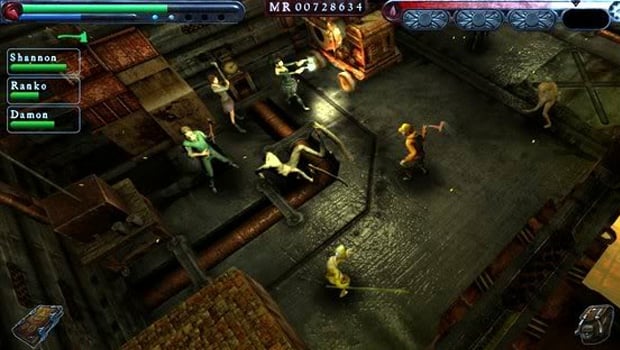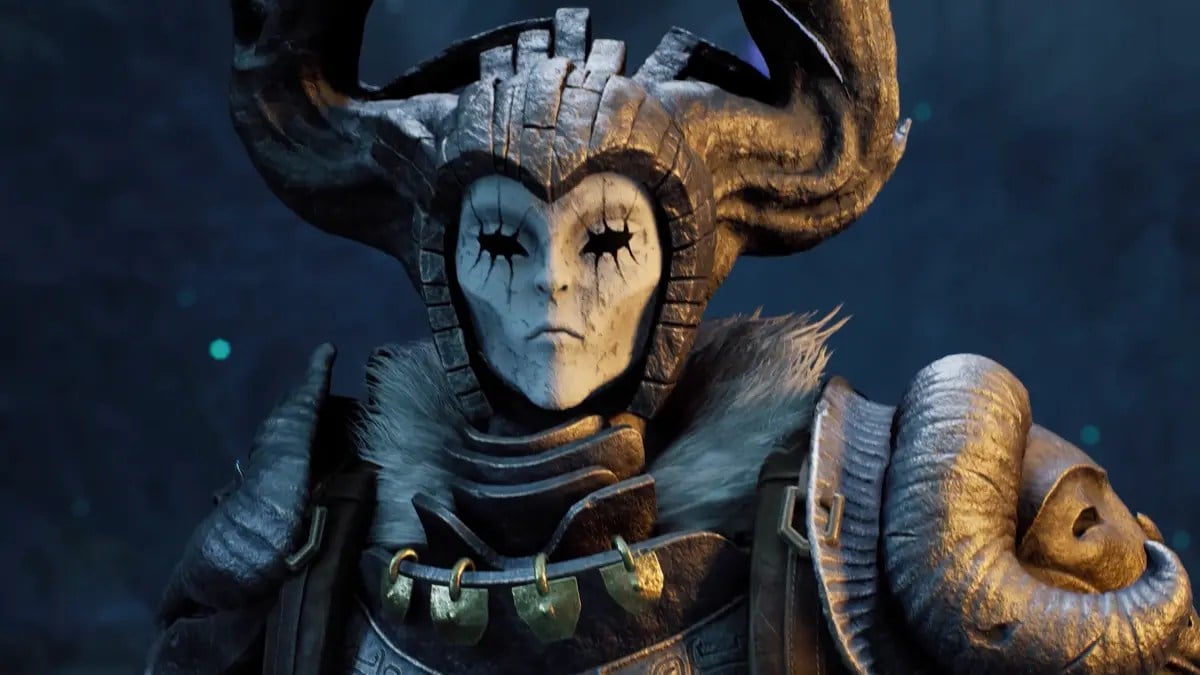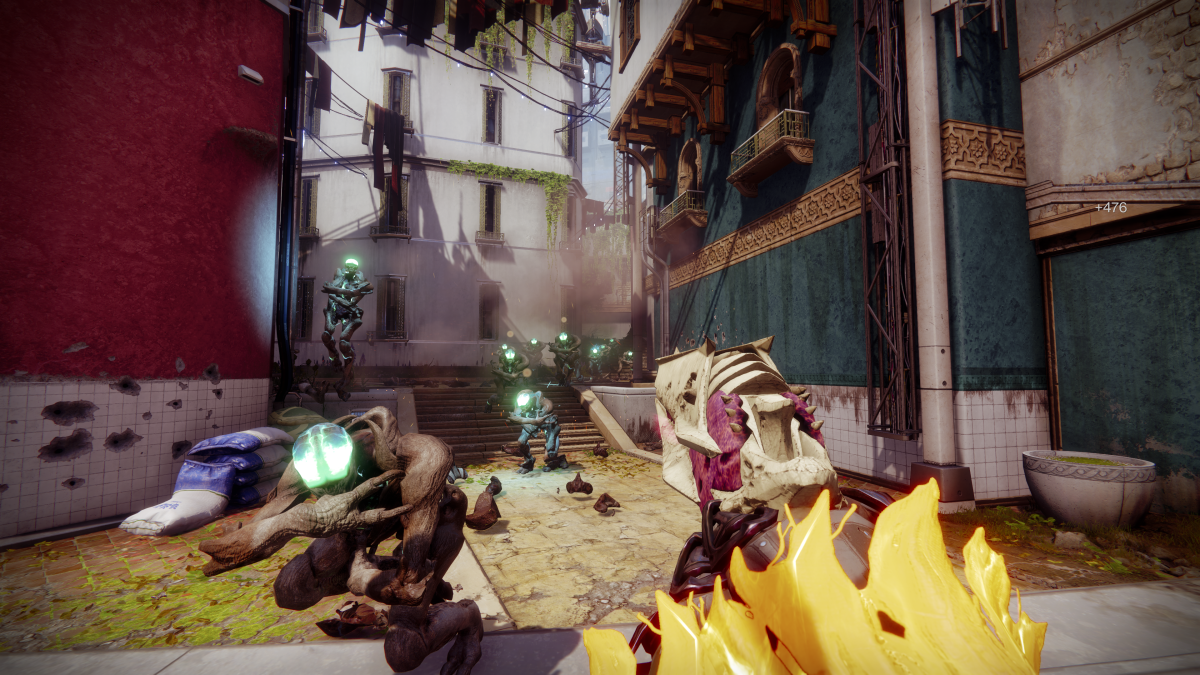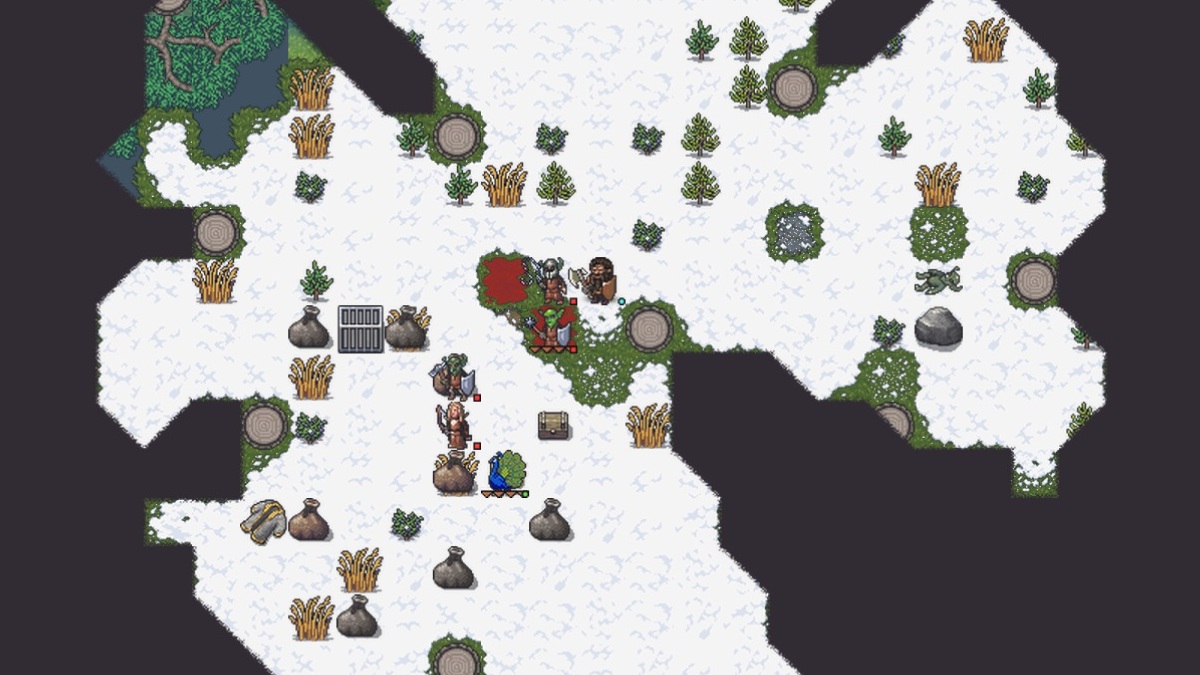Silent Hill: Book of Memories certainly turned heads when it was first revealed, but the attention was not entirely welcome. The idea of a top-down dungeon-crawler set in the Silent Hill universe drew more than a little rage from purists, and ostensibly puzzled everybody else.
Konami, unfortunately, did not help matters. Very little has been seen of the game was due to launch last month, with many gamers not knowing a damn thing about it. We’ve seen a few brief clips and a couple of pictures, but no meaningful information.
Until now, that is.
Destructoid hit the E3 showfloor and sought out WayForward director Adam Tierney, as well as Silent Hill series producer Tomm Hullett, to get the full story on Silent Hill: Book of Memories. The wheres, the whys, and the hows, we’ve got the full scoop. It’s everything you need to know about one of the strangest — and most promising — directions ever taken for Silent Hill, and it’s right here.
The most pressing question would probably be … why, exactly? It’s a bold concept, potentially even alienating since it’s a far cry from the survival horror people are used to. What prompted the decision to produce a dungeon crawling Silent Hill game?
Hulett: Well, to speak to the Insane Cancer in the room we didn’t start with “Hey, let’s do a dungeon crawler, what property can we stick on there?” It came from a much more organic place, with us brainstorming what a “Silent Hill on PS Vita” would mean. What features should we take advantage of? What fits? What is the PS Vita about, and how can we build off of that? So Multiplayer was the immediate no-brainer, and it gave us somewhere new to take things. And to keep the experience fresh as long as possible, we wanted multiple Otherworlds, so then the question is … how do we accomplish that in the universe? That put us in this idea of the game taking place in your Dreams/Nightmares. How do you portray dreams? Well they’re random … and on down the road.
Throughout that process, I was the hardcore SH guy screaming about how off the rails we were, and “oh think of the fans!” However, the themes we were uncovering (both from a gameplay and story perspective) were very compelling. Fun is what games are about (perhaps “enjoyment” is a better word with SH) and in the end that’s all that matters. So I ate my share of crow and here we are, with a dungeon crawler.
… but really, name a good dungeon crawler that ISN’T kind of scary. NetHack? Etrian Odyssey? Nope — I can’t think of one either.
Tierny: I’ve been chasing after the opportunity to work on a Silent Hill game since I got into the industry. When WayForward finally got the chance to work on one, I have to admit I was a little surprised at the concept. “Wait, you’re asking us to make a Silent Hill RPG Dungeon Crawler? What? Okay seriously, where are the hidden cameras?”
But the more WayForward discussed the idea with Konami, the more excited I got about the project. Metal Gear Acid works. Final Fantasy Tactics works. So why NOT an RPG dungeon crawler Silent Hill game? And this is a game that would play to WayForward’s strengths, because what Konami wanted was very solid gameplay fundamentals, which are always at the heart of our games.
What is the narrative premise of Book of Memories, and how does it fit into the series’ universe? Will players have their own storylines, perhaps even their own unique reasons for coming to the town? Is it a pure non-canon spin-off or will there be elements tied to the existing fiction?
Hulett: To your second question, this is a spinoff as far as gameplay is concerned, but it very much takes place in the canonical universe. We operate under the same rules as Silent Hill proper (rather than the SH:SM approach), and you’ll find notes that relate to the history of the town and its inhabitants. Fans don’t like to hear this because they worry it means future SH games will adopt BoM’s gameplay — but hopefully Downpour has now proven that isn’t our intent.
That said, our core concept from the very start, was this is YOU in Silent Hill. Your PS Vita is somehow a portal into the SH world and this is YOUR experience. The plot hook is, Howard Blackwood shows up on your birthday with a package return addressed from Silent Hill. There’s a weird book inside, and when you open it you realize your entire life is written in its pages. Every memory you have, from birth to Howard showing up at your doorstep, is there in black and white (or sepia). You take the next logical step: you erase a line about work that morning and write in your own version.
Waking up the next day, you realize that your change has actually affected reality. Crazy! What else can you change, and will there be consequences?
Tierny: In addition to producing the game, Tomm was our writer and he did a really fantastic job with the story. The entire thing’s dynamic, so what you name yourself, how you create your character, even your actions in-game all dynamically alter and rewrite the story continuously. We have the SH-standard multiple endings (including the joke ending, which takes some clever thinking to trigger), but this time those are being determined by a myriad of story systems that are in turn determined by your moment-to-moment gameplay. I think fans are going to really enjoy playing with the storytelling systems we’ve put together.
Are any gameplay elements from traditional Silent Hill games going to appear? Weapon durability, radios, environmental puzzles. What has been preserved from the main entries, gameplay-wise?
Tierny: Absolutely. WayForward made a tremendous effort to ensure that in spite of the different camera perspective and multiplayer focus, this would still be a very deep, faithful Silent Hill experience. Puzzling is done by collecting odd little trinkets throughout each zone, then organizing them in a particular way to open the exit door. All weapons have durability and/or ammo counts, and you can even swing firearms as melee objects when they run out of bullets.
At the same time, we didn’t just keep everything from the previous SH titles out of reverence. This is a multiplayer horror action title, so we made content choices based on what would work best for a game in this genre. However, I do think fans will be very happy when they see just how many classic Silent Hill elements are in this game. Whatever your favorite previous SH weapon was (Hyper Spray, Great Knife, Sword of Obedience) it’s mostly likely in here. The best enemies from the previous games, the best artifacts — this game is a celebration of all things Silent Hill.
Hulett: To keep the game from being just a complete mess, we really approached the “SH factor” from two directions. One, what elements of Silent Hill can we bring over? Things like Scare Rooms, environments, sound philosophy, etc. What works in our game world? The other is, of course, here are good ideas that work well in a dungeon crawler … how do we make them fit into Silent Hill? So it’s not baseless nostalgia and it’s not painting “Silent Hill” over unrelated gameplay. It’s firmly Silent Hill, but it’s DIFFERENT Silent Hill.
It’s kind of interesting as Adam and I have different approaches to Silent Hill. I’m very much the plot-centric, canon minutiae, let’s not screw this up cause the fans will KNOW guy. Adam is the “experience” guy — he loves Silent Hill because of the times he’s had there, and he just wants to provide more experiences like that. I think both approaches are very evident in Book of Memories. We’re both Silent Hill nerds, but our different approaches balanced and enhanced one another.
As for the new gameplay, what can it be compared to? Is it Diablo with perverse sexual symbolism? Is it open-world, with main quests and sidequests? How far do the RPG elements run with things like leveling and loot?
Tierny: Oh man, where to begin … I guess I would characterize the game as saying it’s traditional Silent Hill gameplay, mixed with the dungeon-crawling of Diablo, the traditional RPG stats of something like a Final Fantasy (STR, DEX, AGI, etc.), and the weapon management of Dead Rising. But these different elements weren’t all just tossed in a box labeled “Silent Hill.” Everything was carefully filtered through the SH aesthetic and lore. So you don’t wear armor, you collect ‘artifacts’ which are little trinkets and talismans you stuff in your pockets to boost your player stats. These objects were an opportunity to bring in even more SH lore, so some of the artifacts you collect include Mira’s Dog Tag, a vial of White Chrism, and the Channeling Stone. It was fun to think about what sort of effect items like these would have on your character, based on their uses in the previous games.
Each zone in the game has its layout auto-generated, ensuring a completely unique gameplay experience each time. As you move through zones, you stumble across challenges, which are essentially single-room enemy gauntlets (sometimes with specific goals or rules). Completing these earns players puzzle pieces, which are then used in a very SH-traditional puzzle system (complete with obscure, poetic clue) to open the exit and move onto the next zone. In addition to this, however, there are plenty of additional goals such as completing a zone-wide mission, locating notes and TV broadcasts, finding loot (Memory Residue) which can then be spent in shops on items and weapons, hunting down particular creatures, experiencing strange special rooms, and more. All of these elements are also auto-generated (including the puzzles and their clues), so that the game remains fresh for players, even after potentially months of gameplay.
Hulett: My friends ask me what the game is like and I find myself namedropping their favorite RPGs, but it’s actually true. If you really searched you’d find similarities to Shiren, Vagrant Story, Persona 3, Phantasy Star Online, Diablo, and more … but we didn’t arrive at this place by saying “Hey, let’s emulate X, Y, and Z cause those games are rad.” (At least not from the Konami end — it’s possible WayForward did in their secret meetings but what do I know?) We designed a cool new Silent Hill experience and just ended up with all these mechanics that remind me of some of my favorite games.
Here’s an example, in creating our elemental system we found there are two colors that form an undercurrent throughout the franchise: white and red. Every single game, intentional or not, plays very heavily on these themes. So the two opposing forces at the core of our game universe are Blood and Light, indicated by your on-screen Karma Meter. And yes, it factors into the story like a morality meter but it goes much further than that.
As you move through the game the creatures you encounter will be aligned with either Blood or Light (and Steel, but those are a completely different beast altogether). Killing them spills out pools of the opposing element — the messier the kill, the more Karma spills out — and these will push your Meter toward one side. Once you’re firmly in the Blood camp, you’ll unlock very destructive abilities which allow you to decimate your foes. If you trend Light instead, you’ll unlock special abilities to heal or protect yourself and your friends. So while solo players will be more focused on how Karma affects the storyline, in multiplayer it creates a fluid class system, so players can kind of decide who will be the DPS guy and who will take a more supportive, healer role.
Tierny: In fact, most of our gameplay systems feed back into this “karma alignment” in some way. For example, you can unlock special skills in the game, which are used to manage enemies. One of the first skills you learn is the “Karma Flip” which allows players to turn every blood enemy into a light one, and vice versa. This skill proves essential in keeping your K-Meter filled up in one direction.
And I know the reaction of everyone reading this right now. “How is this Silent Hill?” Well, it is and it isn’t. It’s not exactly the same genre as the previous games, but it is 1000% at its core a Silent Hill experience. For example, we have ‘Forsaken Rooms’ which are bizarre little rooms in which the camera changes to a traditional SH view, and the player has to deal with whatever’s occurring in there, in whatever way they choose. In the first Forsaken room, you find yourself in a child’s bedroom. There’s a little girl across the room, crying into her hands. You walk over to her, and she screams, vanishes, and reappears elsewhere in the room. So now what do you do? Do you leave her alone? Do you try to attack her? Do you chase her around making her vanish over and over?
Each Forsaken room has 3 different outcomes, based on the player’s actions. Those rooms act like kind of a psych test for the player, as well as a sort of puzzle, requiring the player to experiment in order to accomplish all three outcomes. And that’s fairly indicative of our approach with the game at large. Forsaken Rooms aren’t lifted from any previous SH titles, but they’re completely in the spirit of those games.
Hulett: Remember in Silent Hill 3, you’d walk into a room and there was a doll in a wheelchair, or a guy hanging upside down bleeding into a pail, or the infamous mirror room? Our Forsaken Rooms are reminiscent of those, but with much greater depth and gameplay to them.
What does the multiplayer entail, and are you attempting to still create an atmospheric, scary game despite the online features? Will co-op be drop in/drop out?
Hulett: Multiplayer and Silent Hill is an equation we’ve been thinking over for a long time. Early design docs for Downpour actually had a rough approach that would meld “playing with friends” into the traditional Silent Hill mold. What we realized is that it would take an immense development effort to pull off such a thing properly — and we didn’t want to half-ass it just to have a bullet point on the back of the package.
Since BoM is on the PS Vita and has more of a gameplay-focused experience, it allows us to create a much more traditional multiplayer game. Think of it as sharing each other’s Nightmares. After all, the story doesn’t necessarily dictate you are the ONLY person to receive this weird book, and it’s all about exploring what effect such a ‘gift’ would have on the people around you. Multiplayer is just another extension of that theme.
Co-op isn’t drop in/out, you set up hosted sessions, however players should take note that you can switch between single and multi as much as you want. You aren’t locked into solo play just because nobody was online, and you don’t have to round up your friends every time you want to progress either. Silent Hill has never been more friendly … ?
Tierny: In regard to making the game scary, that’s definitely been one of the major challenges on this title. How do you make a multiplayer game, especially one with a zoomed-out camera, genuinely frightening? Unsettling? Atmospheric? How do you give players a God’s eye view and still make them afraid? Early in development we tried more traditional SH camera perspectives, but they just didn’t work for the type of game this was becoming. So once we settled on a Diablo-esque camera, we started to look into what we could do to make players feel as vulnerable as they do in any other SH game. This game does occur in a dream, and people are often empowered in their dreams (a theme we play with), but in order to succeed as a SH game we knew it was critical to make players feel a little overwhelmed and never too confident. And that generally came down to three things: atmosphere, dread, and threat.
Atmosphere was the easiest to nail of the three; just create creepy, subtle, detailed environments with plenty of implied story in them. Have creatures emerge in unsettling ways that catch players off-guard and make players unsure about where they can safely step (traps play a big part in that as well). Silent Hill games have always featured the most atmospheric, creepiest locations in gaming, so we really just looked to the previous titles for what worked and what didn’t. We also vary the light values substantially from room to room, making your pocket flashlight pretty critical to advancing safely (just like the previous games).
Next was dread, which is absolutely key to the SH franchise. In SH2 when James drops deeper and deeper into the open graves, you get this overwhelming sense of “I don’t want to do this, but I know I need to.” You force players into situations where they’re required to press on, in spite of their own insecurities and fears. You never let them get comfortable. In this game, the only way for players to survive the nightmare (or dream, depending on your interpretation) is to search for those challenges and puzzle pieces. A player might be down to 10% HP, have no remaining health packs, holding a weapon that’s about to shatter. They hear their character’s heartbeat racing (literally) and they know that breaking the challenge orb could unleash four Needlers that will very likely slaughter them. But they have to do it. There’s a lot of those deep-breathing, “Okay, I can do this. I can do this,” sort of moments in the game. Forcing players to push on in spite of their fears, uncertainties, and lack of preparedness is very true to the original SH games, and so this was very important to this product as well.
Finally, there’s threat. How do you make Pyramid Head scary when he’s seen from a topdown perspective? You do it by having him SHRED through your HP with every swipe. In this game, we start players off slowly at first and baby-step them through the first few zones as we teach the basic mechanics. The bubblehead nurses and double-head dogs they encounter cause damage, but not too much, and they’re easy enough to put down. But eventually, you begin running into the “Heavies” — Pyramid Head, the Butcher, the Bogeyman — and these guys mean business. Just when players start to get confident in their abilities, we throw a brutal encounter with one of these guys their way to make players truly start to fear death. That’s where the fear comes from in this game. Not just creepy fear (although there is plenty of that), but also the fear of running into one of these enemies, because every time players do, they know they’re risking their life (and any progress they’ve made since their last save point). You’re always one bad encounter away from losing 20 or 30 minutes of progress, and that’s genuinely frightening. And of course, just when players start to learn the patterns of each enemy, and how to survive encounters with them, that’s when we throw something even more brutal their way.
Hulett: I want to stress, the dungeon crawler is probably the single scariest genre without “Survival” or “Horror” in its description. That’s really the thrill of them, to be 20 minutes from your last save, down on resources, at a threshold where you must decide whether to turn back or keep exploring. After all, another save or rare loot could be behind that next door … Of course, so could three Ghosts and a Bogeyman.
[Even more to come in part two of this interview! Stay tuned.]




